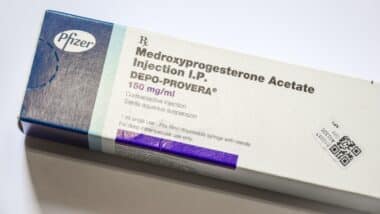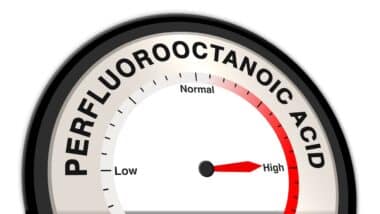 Numerous injury reports suggest serious cases of azithromycin rash could potentially develop into Stevens Johnson Syndrome (SJS), the very rare and severe allergic drug reaction.
Numerous injury reports suggest serious cases of azithromycin rash could potentially develop into Stevens Johnson Syndrome (SJS), the very rare and severe allergic drug reaction.
While not all cases of azithromycin rash lead to Stevens Johnson Syndrome, it is important for patients to be aware of the alleged connection between this drug and a potentially fatal drug reaction. Steven Johnson Syndrome is infamously characterized by the red or purple skin lesions that appear all over the body, which can take up to 30% of skin surface area.
This condition can potentially evolve into its more aggressive cousin Toxic Epidermal Necrolysis (TEN), in which the skin lesions take up to 90% of surface area. Along with serious skin damage, SJS lesions form on the eyelids, mouth, throat, and other mucus areas, creating breathing and swallowing difficulties.
In addition, SJS can also induce organ damage and can potentially result in death if not treated promptly.
Overview of Azithromycin Rash and SJS Link
Stevens Johnson Syndrome has been linked with approximately 100 different medications, with azithromycin (brand name Zithromax) included on the list.
Azithromycin is one of the country’s most popular antibiotics. It works by inhibiting the reproductive ability of bacterial cells and ultimately containing the infection. While azithromycin has many uses, some patients have complained the antibiotic is overprescribed.
Most popularly azithromycin is prescribed to treat respiratory infections and middle ear infections, but it can also be prescribed for a number of other different treatments. However, this popularity increases the likelihood of azithromycin SJS occurrence. According to a recent review published on ehealthme, azithromycin rash may potentially lead to Stevens Johnson Syndrome.
The study analyzed injury reports of 17,288 patients, each who had experienced azithromycin side effects. These patients were taking the drug for less than a month, and were prescribed the medication to treat their upper respiratory tract infection. These injury reports were submitted to the FDA.
The study was compiled on July 22, 2017, with researchers finding 273 (1.58%) of the azithromycin patients had developed Stevens Johnson Syndrome. Stevens Johnson Syndrome is a very rare condition with less than 1,000 cases per year.
The FDA had sent an official warning to Pfizer Inc. on June 19, 2012 to update Zmax (a single-dose form of Zithromax) to include a disclosure regarding the condition. While Pfizer Inc. does acknowledge the possibility of Zithromax SJS, the FDA argued the Zmax brochure does not specifically disclose the condition.
The FDA gave Pfizer until July 2, 2012 to respond to the warning letter and for the company to stop using the Zmax brochure with the insufficient disclosure.
Patients should be vigilant for any signs of azithromycin rash or other odd symptoms. This condition often begins with flu like symptoms, and it occurs within the first few weeks of starting the medication.
Patients who survive SJS often have to contend with some degree of skin damage and eyesight difficulty, and they have to remain vigilant against signs of recurrence. Patients who develop azithromycin rash should consult their doctors immediately and seek emergency treatment if their symptoms worsen.
Do YOU have a legal claim? Fill out the form on this page now for a free, immediate, and confidential case evaluation. The Stevens Johnson Syndrome attorneys who work with Top Class Actions will contact you if you qualify to let you know if an individual lawsuit or class action lawsuit is best for you. [In general, SJS lawsuits are filed individually by each plaintiff and are not class actions.] Hurry — statutes of limitations may apply.
ATTORNEY ADVERTISING
Top Class Actions is a Proud Member of the American Bar Association
LEGAL INFORMATION IS NOT LEGAL ADVICE
Top Class Actions Legal Statement
©2008 – 2026 Top Class Actions® LLC
Various Trademarks held by their respective owners
This website is not intended for viewing or usage by European Union citizens.
Get Help – It’s Free
Help for Victims of Stevens Johnson Syndrome
If you or a loved one were diagnosed with Stevens Johnson Syndrome (SJS) or toxic epidermal necrolysis (TEN) after taking a prescribed or over-the-counter medication, you may be eligible to take legal action against the drug’s manufacturer. Filing an SJS lawsuit or class action lawsuit may help you obtain compensation for medical bills, pain and suffering, and other damages. Obtain a free and confidential review of your case by filling out the form below.
An attorney will contact you if you qualify to discuss the details of your potential case at no charge to you.
Please Note: If you want to participate in this investigation, it is imperative that you reply to the law firm if they call or email you. Failing to do so may result in you not getting signed up as a client, if you qualify, or getting you dropped as a client.
Oops! We could not locate your form.












